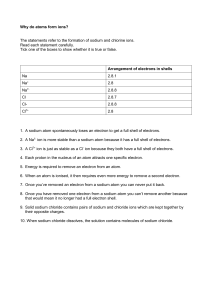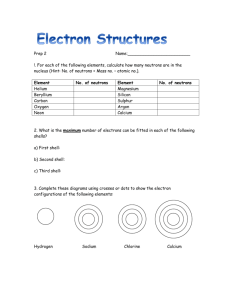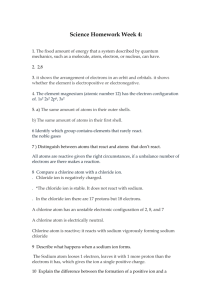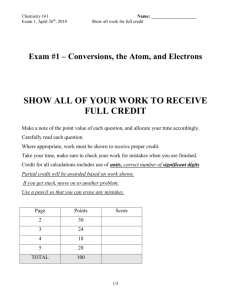DIY 8 - Alvin ISD
advertisement
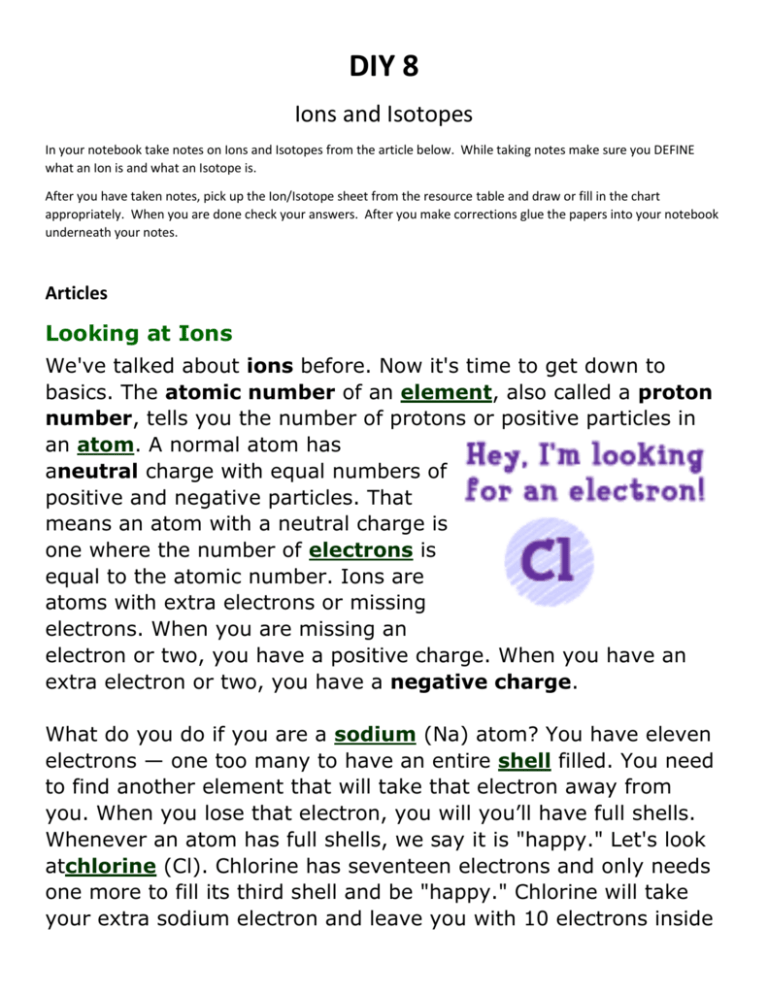
DIY 8 Ions and Isotopes In your notebook take notes on Ions and Isotopes from the article below. While taking notes make sure you DEFINE what an Ion is and what an Isotope is. After you have taken notes, pick up the Ion/Isotope sheet from the resource table and draw or fill in the chart appropriately. When you are done check your answers. After you make corrections glue the papers into your notebook underneath your notes. Articles Looking at Ions We've talked about ions before. Now it's time to get down to basics. The atomic number of an element, also called a proton number, tells you the number of protons or positive particles in an atom. A normal atom has aneutral charge with equal numbers of positive and negative particles. That means an atom with a neutral charge is one where the number of electrons is equal to the atomic number. Ions are atoms with extra electrons or missing electrons. When you are missing an electron or two, you have a positive charge. When you have an extra electron or two, you have a negative charge. What do you do if you are a sodium (Na) atom? You have eleven electrons — one too many to have an entire shell filled. You need to find another element that will take that electron away from you. When you lose that electron, you will you’ll have full shells. Whenever an atom has full shells, we say it is "happy." Let's look atchlorine (Cl). Chlorine has seventeen electrons and only needs one more to fill its third shell and be "happy." Chlorine will take your extra sodium electron and leave you with 10 electrons inside of two filled shells. You are now a happy atom too. You are also an ion and missing one electron. That missing electron gives you a positive charge. You are still the element sodium, but you are now a sodium ion (Na ). You have one less electron than your atomic number. + Isotopes: Neutron Madness We have already learned that ionsare atoms that are either missing or have extra electrons. Let's say an atom is missing a neutron or has an extra neutron. That type of atom is called an isotope. An atom is still the same element if it is missing an electron. The same goes for isotopes. They are still the same element. They are just a little different from every other atom of the same element. For example, there are a lot of carbon (C) atoms in the Universe. The normal ones are carbon-12. Those atoms have 6 neutrons. There are a few straggler atoms that don't have 6. Those odd ones may have 7 or even 8 neutrons. As you learn more about chemistry, you will probably hear about carbon-14. Carbon14actually has 8 neutrons (2 extra). C-14 is considered an isotope of the element carbon. Pages to glue into your notebook



